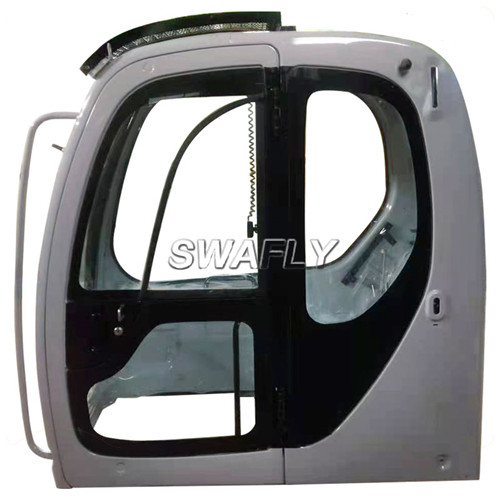Here are some key aspects of an excavator cabin
2023-10-17
An excavator cabin, also known as an operator's cabin or operator's compartment, is the enclosed space within an excavator where the operator controls the machine and carries out various tasks. Excavators are heavy construction machines used for digging, lifting, and moving materials. The cabin provides a comfortable and safe environment for the operator to operate the excavator's controls, ensuring efficiency, safety, and visibility during operation. Here are some key aspects of an excavator cabin:
1. Operator Comfort: Excavator cabins are designed to provide a comfortable workspace for operators who may spend extended periods of time in the machine. Comfort features may include adjustable seats, climate control, ergonomic controls, and noise insulation.
2. Controls and Instrumentation: The cabin houses the controls and instrumentation necessary for operating the excavator. This includes joysticks, foot pedals, levers, switches, and touchscreens that allow the operator to control the movement of the machine's boom, arm, bucket, and tracks.
3. Visibility: Excavator cabins are designed to provide optimal visibility of the work area, including the digging and loading zones. Large windows, glass panels, and camera systems help operators see their surroundings clearly, enhancing safety and accuracy.
4. Safety Features: Operator safety is a priority, and cabins are equipped with safety features such as rollover protection structures (ROPS) and falling object protection structures (FOPS) to protect the operator in case of accidents or objects falling from above.
5. Doors and Access: Excavator cabins typically have doors or access points to allow operators to enter and exit the cabin safely. These doors are designed to be easy to open and close, even while wearing work gear.
6. Heating and Air Conditioning: Many cabins are equipped with heating, ventilation, and air conditioning systems to provide a comfortable environment for the operator regardless of weather conditions.
7. Seating: Comfortable and adjustable operator seats are a crucial feature of the cabin. Seats often have features such as suspension systems and lumbar support to reduce operator fatigue during long hours of operation.
8. Lighting: Proper cabin lighting is essential for night work or low-light conditions. Adequate lighting enhances visibility and operator safety.
9. Technology Integration: Modern excavator cabins may include advanced technology such as touchscreens, GPS systems, camera feeds, telematics, and more to assist operators in their tasks and provide real-time information.
10. Customization: Excavator cabins can be customized based on the operator's preferences and the tasks the machine is intended for. Customization options may include seat adjustments, control layouts, and additional accessories.
The design of an excavator cabin plays a critical role in the operator's productivity and safety. A well-designed cabin ensures that operators can work efficiently while remaining protected from external elements and potential hazards on the construction site.



